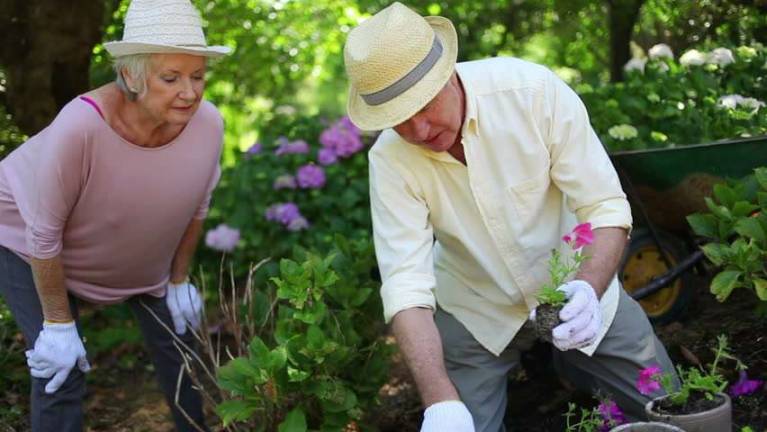June in the garden

By Connie Nichols
Did you enjoy your spring bulbs this year? If you want to add, change or renew the area, now is the time to plan while you can still see this year’s blooms. Ask yourself what worked and what didn't.
Do you want to fill in bare areas or thin crowded ones? Do you want more color, height, more early or late varieties? Notes taken now will help you when the fall bulb catalogs start arriving. If daffodils and tulips did not bloom well, dig up, divide and replant now.
Here are some other tips for working in the June garden:
Plant annuals between fading spring bulb foliage. Don't remove the foliage too soon or you won't have as many blooms next year. Plant balled shrubs and trees before it gets too hot. Keep newly planted trees and shrubs well-watered as temperatures rise.
Keep weeding and add mulch as needed. Be sure to clear a circle around trees and shrubs on lawns and replace with 2 to 3 inches of mulch. But please avoid those dreaded mulch "volcanoes." They cut off air supply to the trunk of the tree and are a breeding ground for insects and rodents.
Keep mowing the lawn. With all the rain we've had, it’s growing quickly. Try not to remove more than 1/3 of its height at each mowing. Keeping the lawn, a little taller helps to prevent weed seeds from getting through. Try to vary the direction of mowing each time you cut the lawn and keep the mower blades sharp.
June is a great month to start a second planting, or even your first, of bush beans, sweet corn, and salad crops.
Mulch your garden in early to mid-June. By then the soil has warmed up enough so you can lay down a three to four-inch layer of straw, bark or compost. You can also use black plastic. Mulch smothers weeds while retaining moisture and nutrients. Just be sure to weed the area well before mulching.
If you plan to lay down an irrigation system or soaker hoses, do it now before the plants get too big.
If you got your garden in early, now is the time to thin carrots, radishes, beets, and lettuce. Thinning prevents competition and provides better air circulation. Tender plants like basil, cilantro and tomatoes can go in later this month.
Harvest strawberries frequently for best yields. Remove any rotted or diseased berries. Mulch with straw.
Closely watch ripening vegetables. Pick them at or close to their peak to encourage further production vs. going to seed. After harvesting early vegetable crops, work some compost into the soil before planting subsequent crops.
Sow seeds for ornamental kale and flowering cabbage to enjoy in the fall.
After they have bloomed, prune spring blooming plants that bloom on old wood, such as azaleas, rhododendrons, Mt. Laurels, lilacs, forsythia, and clematis.
Transplant bearded iris after the blooms fade.
Plant summer flowering bulbs. For best results know the needs of your bulbs. Most don't like wet feet, so avoid water-logged soils and wet spots. Gladiolas, cannas, and dahlias, thrive in full sun and rich, well-drained soil. Caladiums and tuberous begonias prefer shade and soil that is high in organic matter.
Check roses for black spot, mold and aphids. Keep petals and leaves off the ground to reduce disease problems. Lilacs and hollyhocks also do better if the ground is kept clear of debris that may contain pathogens like rust or sooty mold.
Dead head and lightly prune roses throughout the summer. Prune a small amount off the stem after each flower has finished to encourage more blooms. Prune climbing roses after flowering to promote new growth for next year.
Junipers, cypress and conifers can be pruned now. .Place stakes in the ground before plants get too tall.
Keep weeding and dead head plants daily.
Turn the compost pile.
Keep the bird bath clean. Standing water is a breeding ground for mosquitos
Don't forget your houseplants that are vacationing outside...check for insects, and water and feed regularly.
Take pictures to remember where things are planted. Try to plant more native plants and less invasive varieties ( you can get info at the cooperative extension ).
Enjoy the longer days and take time to appreciate what you have accomplished.
Connie Nichols is Milford Garden Member and Master Gardener Emerita (Orange County) for the Milford Garden Club.